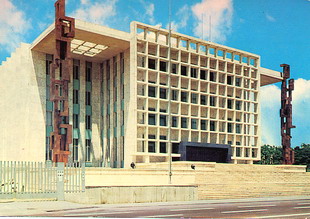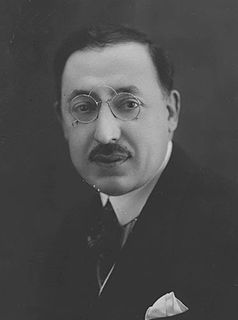| ||
All 136 seats of the National Consultative Assembly | ||
|---|---|---|
Parliamentary elections in Iran began in September 1941, when Reza Shah was still in power, and were continued during the Anglo-Soviet invasion of Iran and succession of his son Mohammad Reza Shah. [2]

Iran, also called Persia, and officially the Islamic Republic of Iran, is a country in Western Asia. With over 81 million inhabitants, Iran is the world's 18th most populous country. Comprising a land area of 1,648,195 km2 (636,372 sq mi), it is the second largest country in the Middle East and the 17th largest in the world. Iran is bordered to the northwest by Armenia and the Republic of Azerbaijan, to the north by the Caspian Sea, to the northeast by Turkmenistan, to the east by Afghanistan and Pakistan, to the south by the Persian Gulf and the Gulf of Oman, and to the west by Turkey and Iraq. The country's central location in Eurasia and Western Asia, and its proximity to the Strait of Hormuz, give it geostrategic importance. Tehran is the country's capital and largest city, as well as its leading economic and cultural center.

Reza Shah Pahlavi, commonly known as Reza Shah, was the Shah of Iran from 15 December 1925 until he was forced to abdicate by the Anglo-Soviet invasion of Iran on 16 September 1941.

The Anglo-Soviet invasion of Iran, also known as the Anglo-Soviet invasion of Persia, was the joint invasion of Iran in 1941 during the Second World War by the British Commonwealth and the Soviet Union. The invasion lasted from 25 August to 17 September 1941 and was codenamed Operation Countenance. Its purpose was to secure Iranian oil fields and ensure Allied supply lines for the USSR, fighting against Axis forces on the Eastern Front. Though Iran was neutral, the Allies considered Reza Shah to be friendly to Germany, deposed him during the subsequent occupation and replaced him with his young son Mohammad Reza Pahlavi.
Prime Minister Mohammad Ali Foroughi came under great pressures to nullify the election results which were considered devoid of legitimacy. [3]

Mohammad Ali Foroughi also known as Zoka-ol-Molk was a teacher, diplomat, nationalist, writer, politician and Prime Minister of Iran.
Immediately after the elections and departure of the Reza Shah, members of the parliament who were individually handpicked by him before his abdication, turned around and asked for investigations on his "misdeeds". [4]










